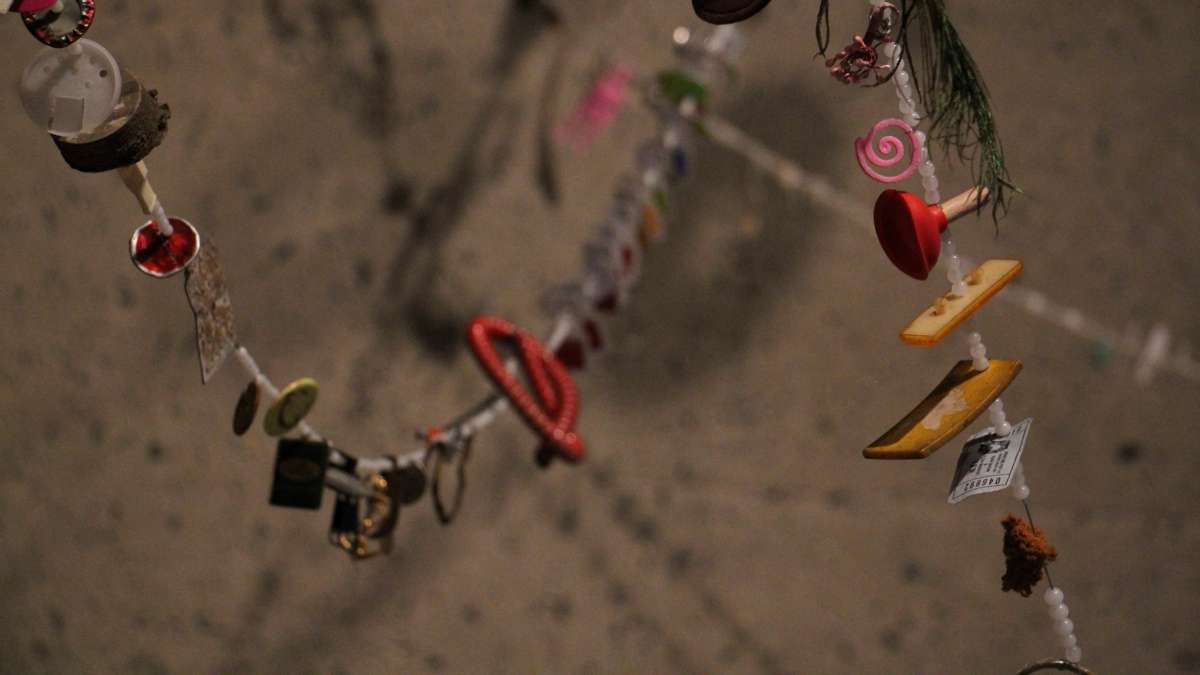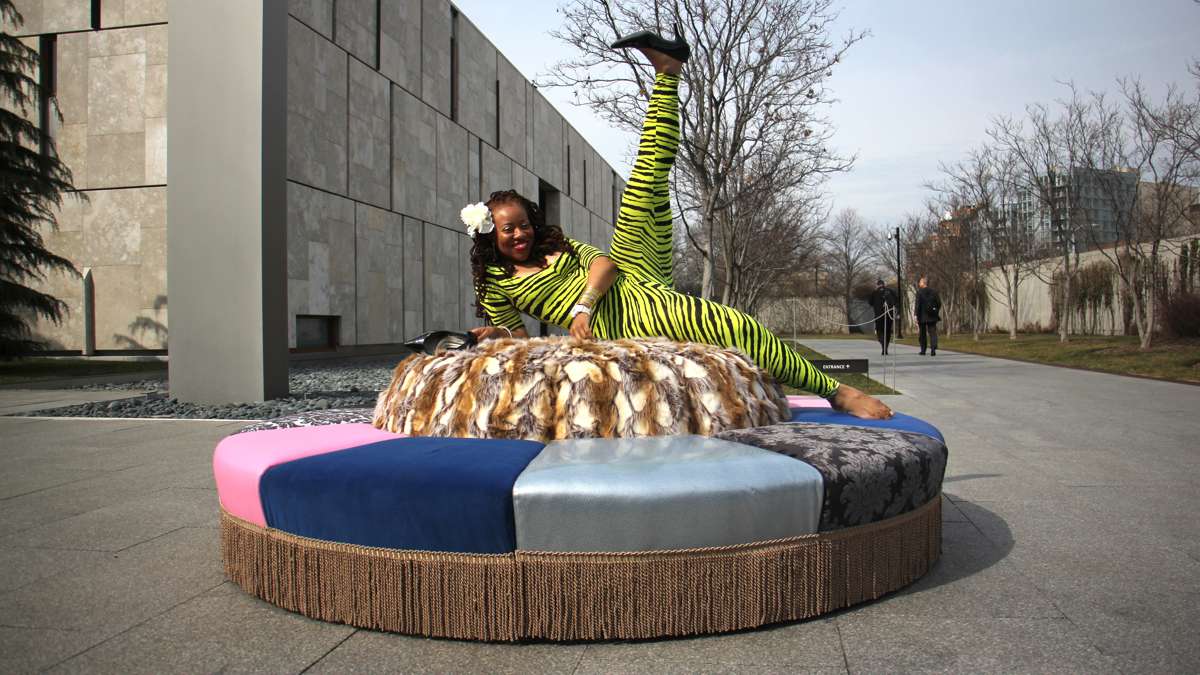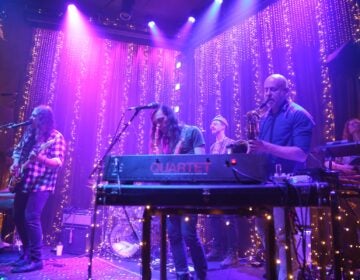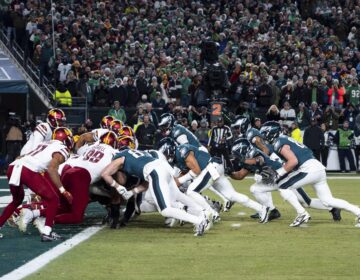The streets of Philadelphia are the canvas for Barnes Foundation’s exhibition
ListenThis weekend, the Barnes Foundation opens an exhibition that goes beyond the walls of its gallery on the Parkway in Philadelphia.
“Person of the Crowd: The Contemporary Art of Flanerie” is about art that directly engages the life of city streets.
“Flanerie” is an artistic practice dating back to the mid-19th century, when artists — mostly in London and Paris — would wander the streets aimlessly to passively absorb whatever the city offered: the crowds, the architecture, the chaos of a dense urban environment.
While the idea of the flaneur was first embraced by the French — in particular by Charles Baudelaire who wrote in 1863 that the practice was a quintessential artistic reaction to the modern urban metropolis — it originated with Edgar Allan Poe.
In the short story “The Man of the Crowd,” written in 1840 while living in Philadelphia, Poe describes an unnamed observer covertly chasing a mysterious man through the crowds of London.
The idea caught on.
“The Situationists make all kinds of projects to encourage what they called ‘drift,'” said Barnes executive director Thom Collins, who curated this show. “To encourage everyone — artist or not — to go out into a public space and wander in an unplanned way, and let the world wash over her or him. In this way, to have new, unexpected experiences.”
Collins pulled together work by 50 contemporary artists, spanning late 1950s to today, mostly video and photography capturing actions performed by artists in the street.
For example, two images from Marina Abramovic’s “Role Exchange” (1975) in which she traded places with an Amsterdam prostitute, spending the night in the window of a brothel while the anonymous sex worker spent the evening at an art opening.
There are maps of Manhattan, tracing various routes artist Mierle Laderman traveled during her 1980 performance to shake the hand of every sanitation worker in New York.
There are also several actual objets d’art, including an assemblage by Robert Rauschenberg: an abstract painting incorporating objects he found on the street.
“In the case of Rauschenberg, he’s picking material up off the street and introducing them to the surface of gestural, abstract paintings,” said Collins. “Its a way to insist on the connection of those paintings to our shared experience in the world outside.”
Rauschenberg was part of a shift in post-war American art that had largely turned its back on depictions of collective, lived experience in favor of more subjective formalism created entirely in studio. He attempted to marry those impulses by attaching objects from the street directly into his abstracted work.
An opportune time for the return of the flaneur
“It’s possible by the late 1950s for women and people of color to be flaneur, which it was not possible in the late-19th century for a variety of political and economic reasons,” said Collins.
Included in the show is a 1977 piece by the Puerto Rican artist Palo Colo, seen stripped to the waist, running along New York’s West Side Highway dragging 51 pieces of scrap wood. It was a reaction to Congress turning down Puerto Rico’s petition for statehood.
Next to it is another running video, Jefferson Pinder’s 2001 footage of himself running naked through blighted streets of Baltimore. Through editing, he slowly dons pieces of clothing as he runs toward the city’s gentrified neighborhoods, eventually running in a business suit through the tonier part of town. The image of a half-naked man running through Baltimore resonates deeply still, as that city is one of the touchstone sites of the Black Lives Matter movement.
A big part of “Person of the Crowd” is what will happen outside the Barnes gallery. The streets of Philadelphia will be used for poster art, billboard exhibits (the infamous Guerrilla Girls will take over billboards along Roosevelt Boulevard, I-76, and I-95), public sculpture, and pop-up performances.
One of those artists is Ayana Evans, who will perform rather mundane tasks — running up the “Rocky” steps, jumping rope, or crashing the cheesesteak lines at Pat’s and Geno’s — while wearing an outlandishly skin-tight bodysuit in a neon yellow zebra print and 4-inch patent leather heels.
Evans has been doing this for a few years in New York, calling it the “Catsuit Project.”
“I would just crash openings, I would just show up in the outfit,” said Evans. “I’m very curvy. If I was skinny, there would be no reaction. But you crash, you’re black, you got this huge butt, and you’ve got the nerve to wear neon and a zebra print.”
Like her predecessors — black people who ran half-naked through blighted urban environments — Evans’ “Catsuit Project” is not so much about her action but about spectators watching her do that action. The performance includes collaborators with video cameras filming spectators, then confronting them afterward to describe their reaction.
All the actions performed as part of “Person of the Crowd” will be documented online, at PersonOfTheCrowd.com. It’s another, complicating layer of artifice and artistry: the footage will be manipulated by artist Man Bartlett, who will edit the material to evoke multiple perspectives.
“I’ll be interpreting the documentation that I’m having created for the performances, and I’ll be remixing that on the site,” said Bartlett. “I’ll be presenting it in alternative ways, or showing viewpoints from the performances that may not include the performer at all.”
The performance remix will remain online for at least a year after the actions end, and the show comes down.
WHYY is your source for fact-based, in-depth journalism and information. As a nonprofit organization, we rely on financial support from readers like you. Please give today.











